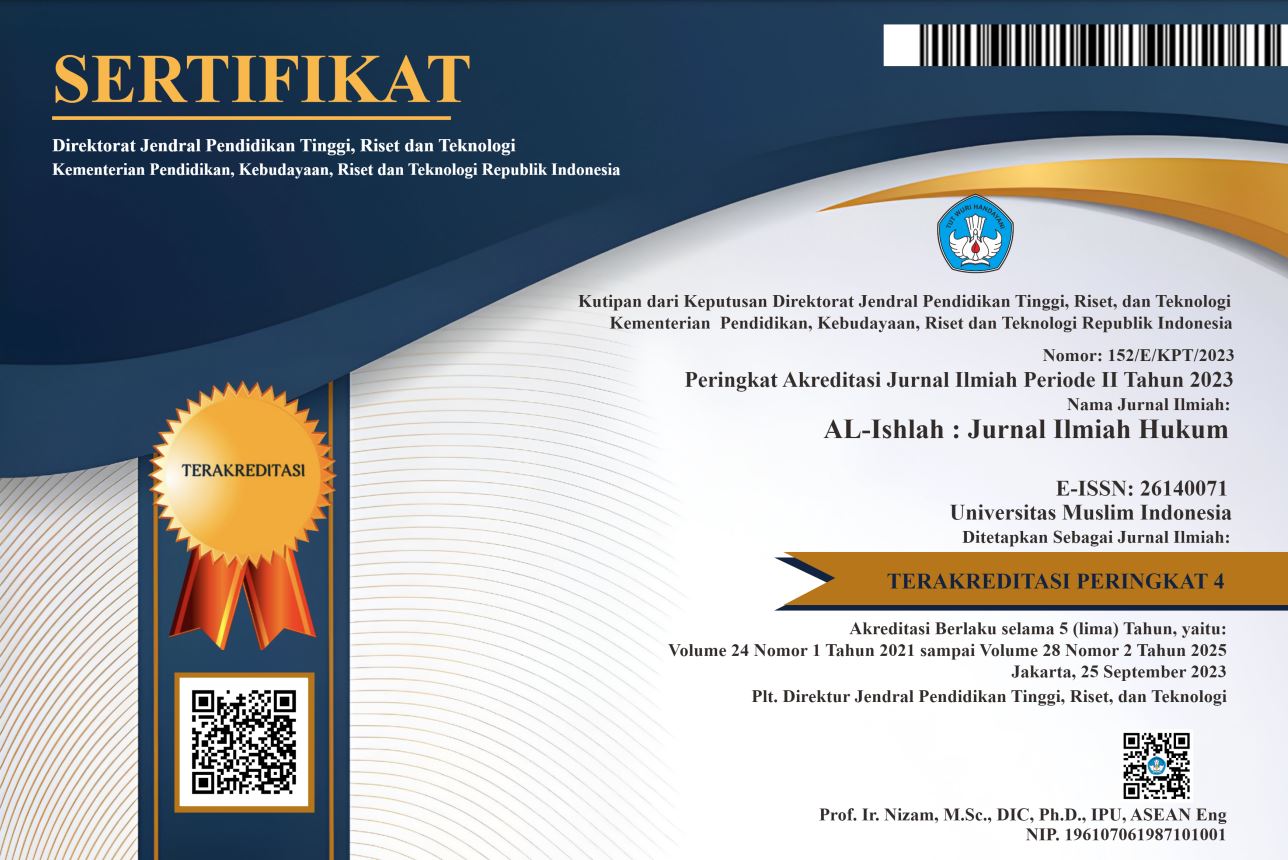Kedudukan Hukum Kreditor Preferen Pajak dan Kreditor Preferen Buruh dalam Proses Kepailitan
Abstract
This study aims to determine the legal position of tax-preferred creditors and labour preferred creditors in the bankruptcy process and to determine the factors that influence the occurrence of disputes between labour preference creditors and tax-preferred creditors in the bankruptcy process. The research method used is a method with the type of normative research using 2 (three) types of approaches, namely the statutory approach (statute approach) and the conceptual approach (conceptual approach). The results of this study are based on a conceptual approach and a statutory approach, the authors find that the legal position of tax-preferred creditors and workers' preferences is the same. law, the factor of justice, the factor of increasing public welfare (public interest), the factor of labour rights and human rights. In order to provide certainty about the legal position of tax preferred creditors and labor preferred creditors, it is deemed necessary to improve the bankruptcy law, so that there are no problems between tax preferred creditors and labour preferred creditors in the bankruptcy process. Factors that influence the occurrence of disputes between labour preference creditors and tax-preferred creditors in the bankruptcy process can be input for members of the House of Representatives and the Government to improve the bankruptcy law.
References
Asikin, Z. (2001). Hukum Kepailitan dan Penundaan Pembayaran di Indonesia. Jakarta: PT. Raja Grafindo Persada.
Dewi, K. S. & Markeling, I. K. (2013). Kedudukan Utang Upah Pekerja dalam Kepailitan. Kertha Semaya: Journal Ilmu Hukum, 1(10), 1-15.
Hamdi, H., et al. (2020). Perlindungan Hukum Bagi Kreditor terhadap Pelunasan Piutang dari Harta Pailit (Studi Putusan Mahkamah Agung Nomor: 511/K/Pdt.Sus-Pailit/2014). 1(1), 20-37. doi: https://doi.org/10.29103/jimfh.v1i1.2541
Hartono, S. R. (2007). Hukum Ekonomi Indonesia. Malang: Bayumedia Publishing.
Hatta, H. (2018). Kontradiktif Penerapan Hukum Pajak Berganda di Indonesia. Al-Ishlah: Jurnal Ilmiah Hukum, 21(1), 50-58.
Makmur, S. (2016). Kepastian Hukum Kepailitan Bagi Kreditor dan Debitor pada Pengadilan Niaga Indonesia. Mizan: Journal of Islamic Law, 4(2), 337-368.
Marzuki, P. M. (2005). Penelitian Hukum. Jakarta: Kencana Prenada Media Group.
Rahmani, I. (2018). Perlindungan Hukum kepada Pembeli dalam Kepailitan Pengembang (Developer) Rumah Susun. Jurnal Hukum Bisnis Bonum Commune, 1(1), 73-88. doi: https://doi.org/10.30996/jhbbc.v0i0.1758
Simanjuntak, H. A. (2019). Penyelesaian Utang Debitor terhadap Kreditor Melalui Kepailitan. Jurnal Justiqa, 1(1), 8-16.
Sjahdeini, S. R. (2016). Hukum Kepailitan: Memahami Undang-Undang No. 37 Tahun 2004 tentang Kepailitan. Jakarta: Kencana Prenada Media Group.
Yani, A. & Widjaja, G. (2002). Seri Hukum Bisnis Kepailitan. Jakarta: PT. Raja Grafindo Persada.
Copyright (c) 2020 Imran Eka Saputra

This work is licensed under a Creative Commons Attribution-NonCommercial-ShareAlike 4.0 International License.
















